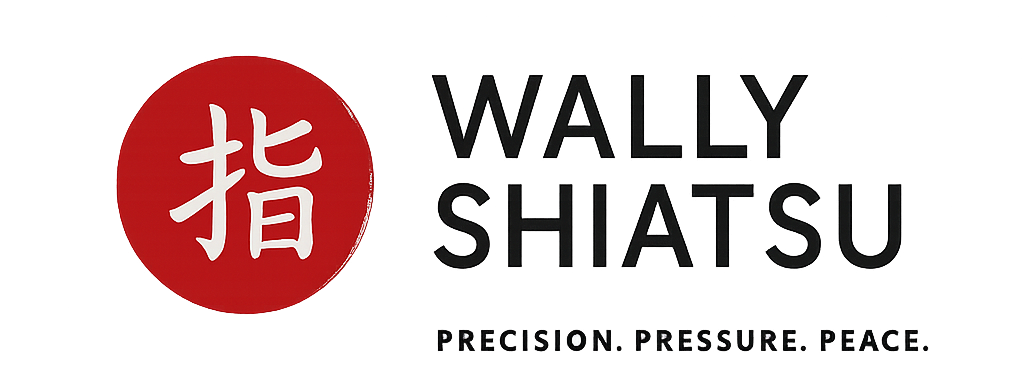Understanding Professional Boundaries in Massage Therapy
Definition of Professional Boundaries
Professional boundaries in massage therapy refer to the clear limits that define the appropriate relationship between a massage therapist and their clients. These boundaries are vital for maintaining a safe and respectful environment, distinguishing between a professional relationship and a personal one. Boundaries encompass physical, emotional, and ethical aspects, ensuring that both the therapist and client understand their roles.
Importance of Boundaries in Therapy
Boundaries in therapy are essential for several reasons. They protect both the client and the therapist. Here are some key points about the importance of boundaries:
- Safety: Boundaries create a safe space for clients to express themselves without fear of judgment.
- Trust: Establishing clear limits fosters trust between the therapist and client.
- Professionalism: Adhering to boundaries enhances the professionalism of the therapist.
| Importance of Boundaries | Description |
|---|---|
| Safety | Ensures a secure environment for clients. |
| Trust | Builds a strong, trusting relationship. |
| Professionalism | Maintains high standards in therapy. |
How Boundaries Protect Clients
Boundaries serve as a protective shield for clients by preventing potential misunderstandings and inappropriate behavior. When therapists maintain professional boundaries, clients feel more comfortable discussing their needs and concerns, leading to more effective treatment and better outcomes.
For instance, if a therapist respects a client’s personal space, it allows the client to relax and fully benefit from the massage. Conversely, crossing these boundaries can lead to discomfort, distrust, and even trauma.
In summary, best practices for maintaining professional boundaries in massage therapy not only safeguard clients but also elevate the quality of care provided. By adhering to these practices, therapists can create a positive and healing environment for everyone involved.
Best Practices for Maintaining Professional Boundaries in Massage Therapy
Clear Communication with Clients
Effective communication is crucial in massage therapy. A therapist must articulate their approach and what clients can expect during a session. This clarity helps clients feel comfortable and respected. For example, before starting a session, a therapist might say, I will focus on your back today unless you have other areas that need attention. This simple statement sets the tone for a respectful and professional relationship.
Establishing Consent Before Sessions
Consent is a cornerstone of professional boundaries. Before any massage begins, a therapist should obtain clear consent from the client. This can involve discussing the type of massage, areas to focus on, and any specific concerns the client may have. A therapist could ask, Are you comfortable with a deep tissue massage today? This question not only seeks consent but also invites the client to express their preferences.
The Role of Verbal and Non-Verbal Cues
Understanding both verbal and non-verbal cues is essential for maintaining boundaries. Therapists should pay attention to a client’s body language and tone of voice. For instance, if a client seems tense or hesitant, it may be a sign to check in with them. A simple question like, How does that pressure feel? can open the door for feedback and adjustments.
| Cue Type | Example | Implication |
|---|---|---|
| Verbal | That feels too hard. | Indicates discomfort or a need for change. |
| Non-Verbal | Tensed muscles or a stiff posture | Suggests the client may be uncomfortable. |
By being attuned to these signals, therapists can navigate their sessions more effectively and maintain a respectful atmosphere.
Ethical Practices in Massage Therapy
Overview of Massage Therapy Professional Ethics
In the field of massage therapy, ethical practices are crucial. These ethics serve as a guiding light for professionals, ensuring they provide safe and effective care. Key principles include confidentiality, informed consent, and professional integrity. Massage therapists must respect the dignity and rights of their clients by communicating openly and honestly about treatments, risks, and benefits.
| Principle | Description |
|---|---|
| Confidentiality | Keeping client information private. |
| Informed Consent | Ensuring clients understand treatments before proceeding. |
| Professional Integrity | Upholding honesty and ethical standards in practice. |
Ethical Dilemmas and Boundary Setting
Massage therapists often face ethical dilemmas arising from unclear boundaries between the therapist and the client. For example, a therapist may struggle with a client who wants to discuss personal issues during a session. It is vital for the therapist to establish clear boundaries to ensure the focus remains on the client’s well-being and the effectiveness of the therapy.
Setting boundaries involves:
- Clear Communication: Discussing what is acceptable during sessions.
- Professionalism: Maintaining a professional demeanor at all times.
- Awareness of Personal Limits: Knowing when to refer clients to other professionals.
The Impact of Ethics on Client Trust
Ethical practices directly influence the trust clients place in their massage therapists. When therapists adhere to ethical guidelines, clients feel safe and respected. This trust encourages clients to return for more sessions, enhancing their overall experience. For instance, a therapist who prioritizes confidentiality will likely foster a deeper connection with clients.
In contrast, a breach of ethics can lead to a loss of trust. Clients may feel uncomfortable or unsafe, which could drive them away. Therefore, maintaining ethical standards is not just a professional obligation; it is essential for building lasting relationships with clients.
The Client-Therapist Relationship and Boundaries
Building Trust While Maintaining Boundaries
In the field of massage therapy, trust is the cornerstone of a successful client-therapist relationship. A therapist must create a safe environment where clients feel comfortable sharing their needs and concerns. This trust is built through clear communication and professionalism.
Therapists should explain their methods and techniques before beginning a session. This openness helps clients understand what to expect, which can ease any anxiety. Additionally, therapists should practice active listening, showing clients that their feelings and preferences are valued.
However, while trust is essential, it is equally important to maintain boundaries. Boundaries help define the professional relationship and protect both parties. For example, therapists should avoid discussing personal matters or engaging in physical contact that is beyond the scope of the therapy.
Recognizing Boundary Violations
Boundary violations can occur when the lines between professional and personal relationships blur, leading to discomfort, mistrust, and even harm. Common signs of boundary violations include:
- Inappropriate physical touch that is not part of the treatment.
- Excessive personal sharing by the therapist.
- Clients feeling pressured to engage in activities outside of therapy.
Recognizing these signs early can help therapists address issues before they escalate. It is crucial for both therapists and clients to be aware of their feelings and communicate openly about any discomfort.
| Signs of Boundary Violations | Possible Impact |
|---|---|
| Inappropriate physical touch | Client discomfort, mistrust. |
| Excessive personal sharing | Erosion of professional integrity. |
| Client pressure for extra services | Stress and confusion. |
Strategies for Repairing Boundaries in Relationships
When boundaries are crossed, it is vital to take steps to repair the relationship. Here are some effective strategies:
- Acknowledge the Issue: Both parties should recognize that a boundary has been violated. This acknowledgment is the first step towards resolution.
- Open Communication: Discuss what happened openly and honestly. Each party should express their feelings and concerns without judgment.
- Re-establish Boundaries: Clearly define what is acceptable moving forward, which may involve setting specific rules about physical touch and personal sharing.
- Seek Professional Guidance: In some cases, consulting with a supervisor or mentor for advice on navigating the situation may be beneficial.
- Follow-Up: Check in with the client after the discussion to ensure that they feel comfortable and safe moving forward.
By implementing these strategies, therapists can work towards restoring trust and ensuring a healthy, professional relationship.
Self-Care for Therapists in Maintaining Boundaries
Importance of Self-Care in Therapy
Self-care is crucial for massage therapists. They often give so much of themselves to clients that they can forget their own needs, leading to burnout, fatigue, and even resentment. When therapists take time for themselves, they recharge their energy and maintain a clear mind. This not only benefits their well-being but also enhances their ability to provide effective therapy. A therapist who feels good is more likely to create a positive atmosphere for their clients.
Techniques for Stress Management
To manage stress, therapists can use various techniques. Here are some effective methods:
- Mindfulness Meditation: Taking a few minutes each day to focus on breathing can help clear the mind.
- Physical Exercise: Regular physical activity, even simple walks, can boost mood and energy.
- Journaling: Writing down thoughts and feelings can help process emotions and relieve stress.
- Setting Boundaries: Learning to say no when necessary protects personal time and energy.
| Technique | Description |
|---|---|
| Mindfulness Meditation | Focuses on breathing and present moment. |
| Physical Exercise | Engages the body and boosts mood. |
| Journaling | Helps process emotions and thoughts. |
| Setting Boundaries | Protects personal space and time. |
How Self-Care Enhances Professional Boundaries
Self-care plays a vital role in maintaining professional boundaries. When therapists prioritize their own needs, they are better equipped to set limits with clients. This means they can say no to extra sessions or adjust their schedules without feeling guilty. A therapist who practices self-care is more likely to communicate openly about their boundaries, which helps clients understand the therapist’s limits and fosters a respectful relationship.
Communication Strategies for Boundary Setting
Effective Communication Techniques
When a massage therapist works with clients, clear communication is key. Setting boundaries helps create a safe space. Here are some effective techniques:
- Be Direct: Use clear language to explain what is acceptable and what is not. For example, saying, I can only work on your back today, sets a clear boundary.
- Use “I” Statements: This helps express feelings without sounding accusatory. For instance, I feel uncomfortable when… is more effective than You make me uncomfortable.
- Establish Expectations: Before starting a session, talk about what the client can expect, including discussing the types of touch that will be used and the areas that will be focused on.
Addressing Client Concerns About Boundaries
Clients may have questions or concerns about boundaries. Addressing these concerns is vital for building trust. Here are some tips:
- Listen Actively: Show clients that their feelings matter. If a client asks, Can you work on my legs? respond with, I can work on your legs, but let’s discuss what that means.
- Encourage Questions: Create an environment where clients feel comfortable asking about boundaries, helping to clear up misunderstandings.
- Provide Information: Share why certain boundaries are in place. For example, explaining that some areas are off-limits due to personal comfort can help clients understand.
Role of Active Listening in Therapy
Active listening is a powerful tool in therapy. It involves fully focusing on what the client is saying. Here’s how it plays a role:
- Builds Trust: When clients feel heard, they are more likely to open up, fostering effective therapy.
- Clarifies Misunderstandings: By repeating back what a client says, the therapist can ensure they understand correctly. For example, So, you are saying you feel anxious about… can clear up confusion.
- Encourages Open Dialogue: Active listening invites clients to share more, leading to a deeper understanding of their needs.
| Technique | Description |
|---|---|
| Be Direct | Use clear language to explain boundaries. |
| Use “I” Statements | Express feelings without sounding accusatory. |
| Establish Expectations | Discuss what clients can expect before starting a session. |
| Listen Actively | Show clients their feelings matter. |
| Encourage Questions | Create a comfortable environment for inquiries. |
| Provide Information | Explain why certain boundaries are necessary. |


